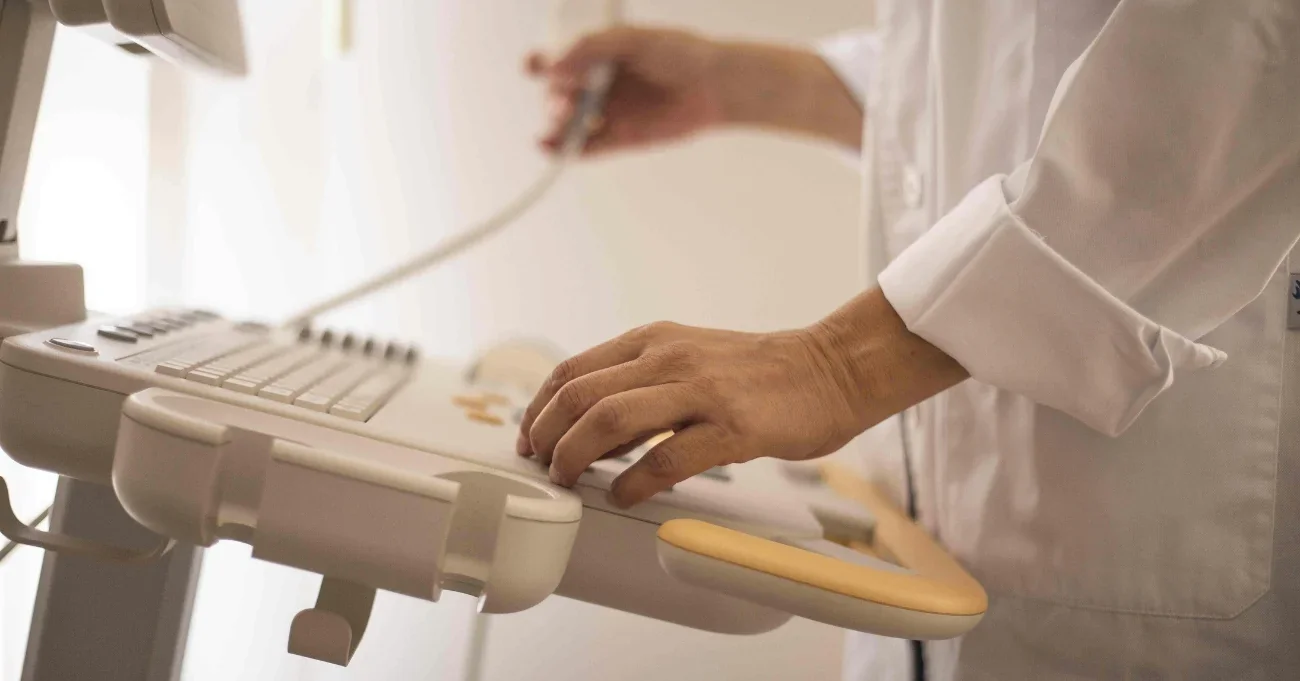Imagine never having to wonder where a critical piece of equipment is during a busy shift. That’s the promise of medical device RFID, which uses radio frequency tags to track, monitor, and secure everything from surgical instruments to high-value machines.
At Aloa, we connect healthcare teams with vetted developers who know how to build this kind of efficiency into your existing software stack. Whether you're adding RFID to improve asset visibility or designing a custom healthtech platform, we’ll help you scope the right solution and find a technical partner who truly understands the workflow.
In this guide, we’ll walk through what medical device RFID is, how it works in practice, and what it takes to implement it well. From real benefits to key features, you’ll get a no-fluff breakdown so you can move from concept to deployment with confidence.
What is a Medical Device RFID?
Medical Device RFID, or Radio Frequency Identification, is a type of technology that focuses on tracking and monitoring the last usage data for a device. Utilizing this system on a medical device provides healthcare organizations with ample opportunity to manage their devices and conduct detailed analyses of a patient's health and well-being.
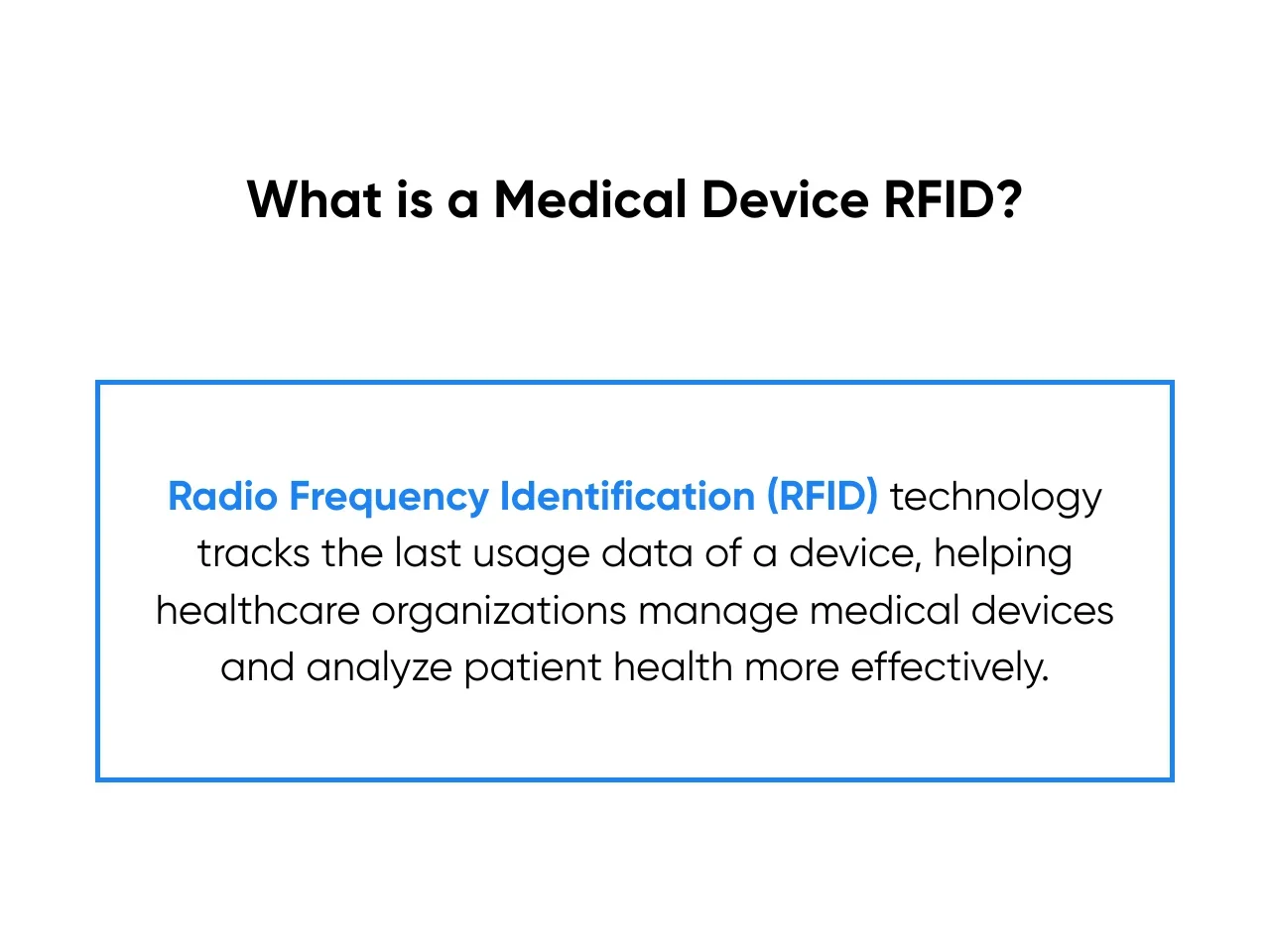
Medical device RFID also allows hospitals and clinics to provide a cost-effective solution regarding traceability while monitoring the functionality and condition of different apparatus to determine if it needs maintenance or replacement. Overall, integration of this system can significantly benefit the healthcare industry and its medical personnel while ensuring stable and consistent long-term usability.
Components of an RFID System
One of the main concerns of most healthcare industries with implementing an RFID system is safety. Fortunately, a medical device RFID system offers more control and tighter regulations due to its functionality as a life-saving measure for potential patients and medical staff.
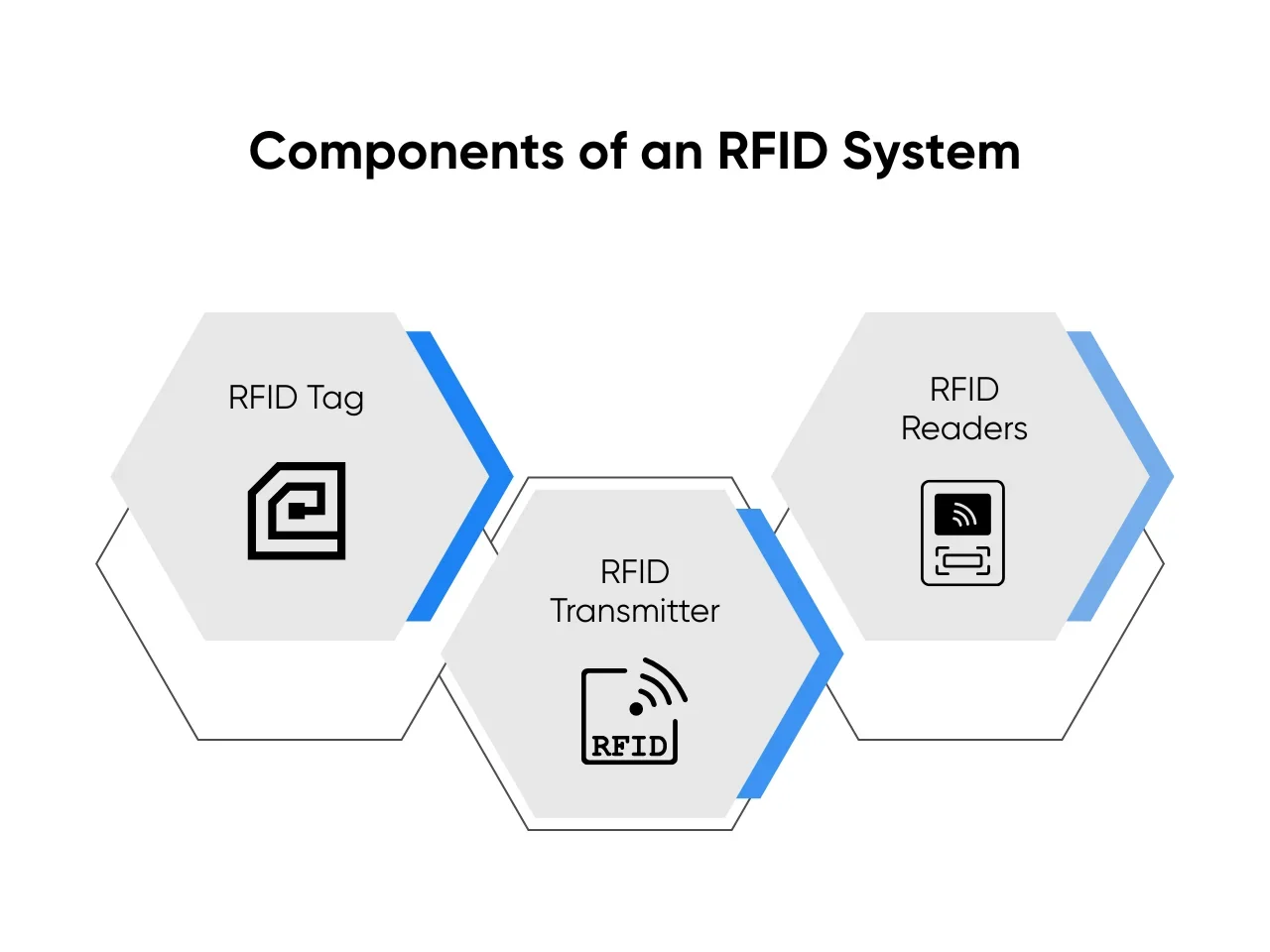
Here are some of the vital components of a medical device RFID system:
RFID Tag
The RFID system operates by tagging a device, typically with a small electronic chip, to help monitor the device easily while also keeping a closer look at the system's condition as it operates. These RFID chips or tags also function as strong security measures to effectively calculate the quality of the medical instrument and the number of users actively utilizing the device.
An RFID tag can also be tuned to track the structure and components of a medical device by calculating various factors such as the amount of liquids used or battery life quality to ensure that the product operates at optimum quality.
RFID Transmitter
RFID tags are only helpful if their findings integrate with an existing software system. Transmitters are used to ensure that the tags can continuously send reports without risks of losing crucial information, especially in the case of medical products. Every RFID system has a unique tag or code for specific tracking for large-scale healthcare organizations.
These transmitters can emit signals from a built-in antenna receiver or a dedicated transceiver through various methods. Integrating the transmitter to operate on an existing healthcare system might require the expertise of a healthtech software developer or specialist.
RFID Readers
Once the RFID tags track a medical device's whereabouts and other critical statuses and transmit them to a server, the final step is to decode the relevant data into readable information. Good quality RFID readers allow users to instantly receive information from a singular request.
Capitalizing on tracking consumables such as medications can allow pharmacies and hospitals to ensure that every patient receives the appropriate prescription. Also, these readers can be integrated into existing systems to ensure that all records are kept safe for the healthcare organization involved.
How to Implement the Use of Medical Device RFID Systems
Tracking high-stakes medical equipment is a crucial component for every hospital or clinic. Every supply and instrument should be actively monitored to prevent potential issues with losing expensive medical devices or risks of the items failing to work as intended. However, each medical device RFID system requires implementation with existing systems to ensure it works properly.

Here is how to properly implement the use of medical RFID systems in a healthcare organization:
Step 1: Evaluate the Needs and Requirements
RFID systems offer superb usability and security when handling expensive medical equipment. However, managing these systems can become costly for smaller healthcare centers. Maintaining the quality and usability of each RFID system also requires constant upkeep, making organizing and allocating resources more complex than traditional tracking methods.
Start with evaluating the benefits of integrating an RFID system into healthcare. If the organization can determine positive returns from the expanded monitoring system of RFIDs, then it's best to start deciding which equipment or devices stand to benefit the most. Careful evaluation can lead to a better handling of projection costs.
Step 2: Determining Use Case
Medical device RFID systems offer plenty of benefits for healthcare organizations to ensure that their equipment is well-maintained and monitored at all times. However, utilizing an RFID system can vary in the medical field and industry depending on the usage of this type of system.
Some healthcare centers use RFID systems to help keep track of hospital equipment. In contrast, others take advantage of loaner systems to ensure that the device is always within the registered patient's vicinity. Determining the specific use case of an RFID system ensures healthcare organizations that their equipment always remains secure.
Step 3: Engage With Reputable RFID System Providers
RFID system manufacturers can vary in dependability and quality. It's crucial that healthcare organizations partner with reputable RFID system providers that can develop a system that will easily integrate with current modern healthcare software solutions. Additional checks and requirements, such as ensuring regulatory compliance, are essential when choosing RFID companies.
Step 4: Customize the RFID Tags
RFID systems can only benefit an organization if the proper parameters and metrics are monitored. Consult with professionals on how to take full advantage of the various data that an RFID tag can track and utilize to improve the overall efficiency and productivity in the healthcare center.
Additional RFID considerations would be the ability to check the overall condition of a medical device and ensure that the tags are made with durable, long-lasting materials to guarantee reliable results.
Step 5: Instruct Personnel to Utilize the Medical Device RFID Systems
Monitoring RFID systems requires personnel training to secure reliable data. Healthcare organizations should dedicate the necessary resources to train and develop a reliable system for staff to read the results of each RFID tag appropriately used. Understanding the benefits and ensuring strict security protocols are also essential components in capitalizing on the functionality of medical device RFID systems.
Step 6: Monitor and Evaluate Progress
Continuously monitoring the performance of each medical device RFID in place will allow healthcare organizations to gain a better understanding of crucial factors in their operations. Each data recorded can lead to formulating a more streamlined workflow efficiency plan to help raise productivity in the workplace alongside easing the burden of inventory management.
Use Cases for RFID in Medical Devices
RFID is a technological breakthrough in managing and monitoring items quickly and precisely. Further development of these RFID systems expands its usability even in medical devices today.
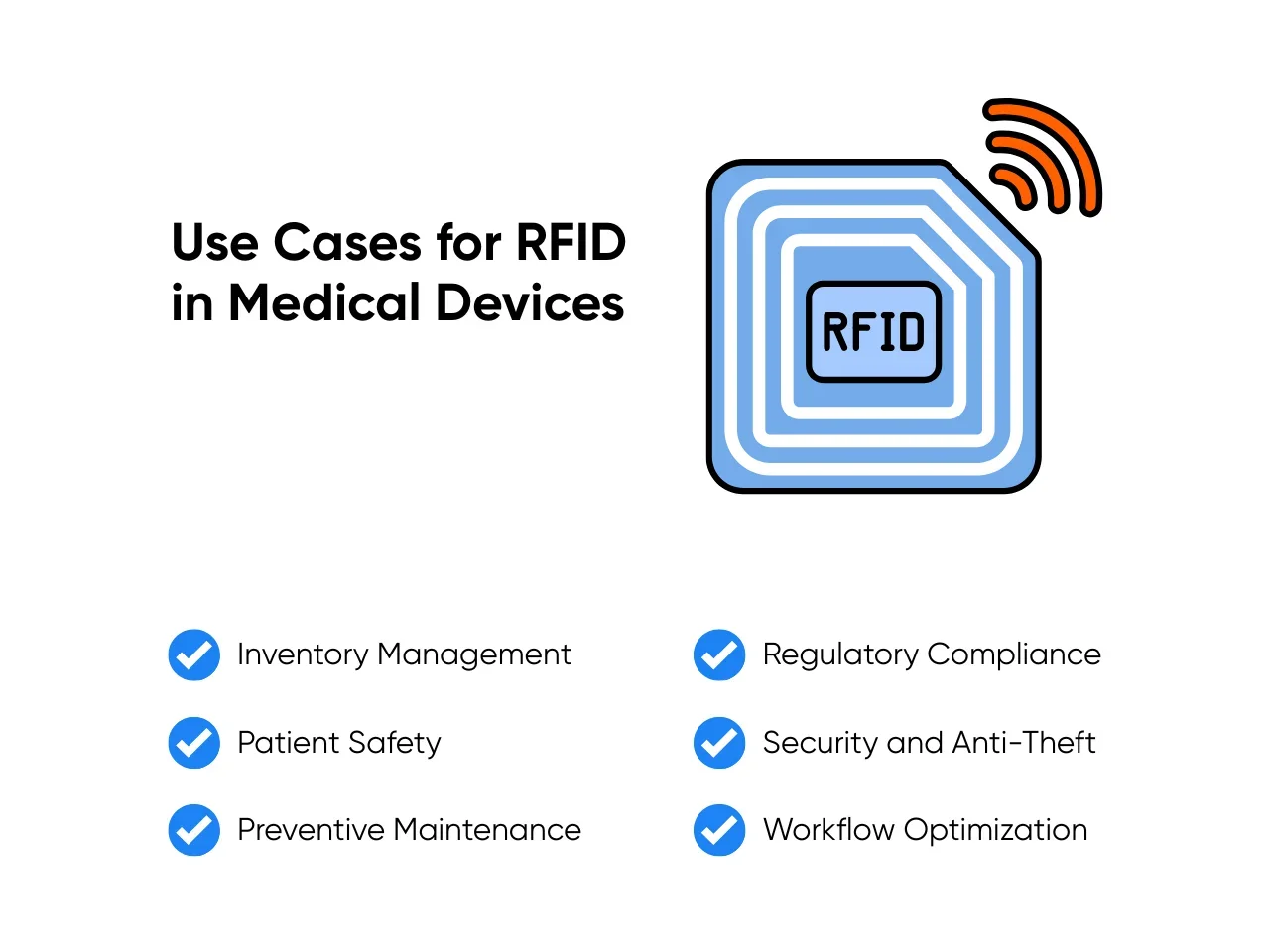
Fortunately, the constantly improving nature of these medical device RFID systems ensures both hospital and patient care are well maintained due to its radio signals that boast no harm to any existing medical conditions. These are some of the most critical use cases to note for RFID tracking in medical devices:
Inventory Management
The main focus of RFID systems is to function as a form of barcode scanning to track and manage equipment. However, RFID utilizes radio frequencies to painlessly send its signals to a reader, making the entire monitoring process much easier to handle than needing a barcode scanner to be within nearby range.
Healthcare organizations require tons of medical devices, and equipping those items with an RFID system helps keep tracking and management to a minimum. Sophisticated RFID systems can also showcase each medical equipment's precise location, availability, and usage patterns to ensure it's always within reach.
Patient Safety
More extensive medical facilities will require careful planning and precision with each patient. Mishandling a single case can cause severe consequences. Maintaining a consistent and precise approach to patient safety is essential. RFID systems allow organizations to better select and verify the right medical equipment for the job.
By tagging medical devices with RFID, healthcare providers can verify the patient's identity and compatibility with the patient's medical records to ensure that only the assigned equipment is used by that specific individual and prevent potential medical errors.
Preventive Maintenance
Advanced improvements in RFID development also allow for monitoring the condition of a medical device to ensure that the item functions within optimal parameters. In the health industry, the device used to treat patients must be successful while in use.
RFID systems ensure healthcare organizations that each medical device has a detailed report on its scheduled maintenance and systems upgrades to expand the overall lifespan of each expensive medical equipment.
Regulatory Compliance
Similar to any equipment that can affect the health of an individual, medical device RFID systems should comply with the regulatory standards set by the FDA. FDA UDI (Unique Device Identification) requirements ensure that the patient's health, security, and well-being are carefully protected with RFID monitoring.
Remember to always keep an eye out for FDA compliance to prevent unnecessary potential risks of mishandling equipment and patient data. Regular inspections and audits require healthcare organizations to present the records of each RFID system to ensure proper usage of these devices.
Security and Anti-Theft
Similar to inventory management, utilizing RFID systems for various medical devices lowers the risk of theft or tampering with any equipment used by the healthcare organization. Alarms or other failsafe can be installed alongside existing security features to help minimize the potential risk of outside interference.
Other security benefits include proper authorization and authentication usage, registered ID monitoring to ensure that all personnel's records are monitored, and patient usage, which can vastly enhance security measures within a healthcare system.
Workflow Optimization
Hospitals, clinics, and other healthcare organizations can become quite busy. These environments require quick and precise medical responses, with each second drastically affecting the conditions of each patient involved. The movement and operations must flow smoothly to ensure proper medical attention is prescribed to every patient in the healthcare center.
Medical device RFID systems can aid in workflow optimization with their ability to automatically update electronic health records (EHRs) when used, reducing the need for manual data entry and minimizing the risk of errors when inputting critical information. Also, detailed RFID systems monitoring will make filtering through the list of available medical devices more accessible to track.
Key Takeaway
Medical device RFID systems are an integral step in improving the functionality and security of healthcare organizations across the globe. Better monitoring and condition tracking can ensure that equipment stays updated with scheduled maintenance while preventing unnecessary gaps in potential device failure.
Implementing medical device RFID systems in a healthcare organization should include careful monitoring and use to ensure that all relevant information, such as location, condition, and usage patterns, are recorded for potential inspections in the future. Personnel training is also required to ensure the new RFID system does not negatively impact the overall quality of medical care.
If you want to learn more about RFID systems and how they can improve medical devices, contact us at [email protected] to learn more.
Frequently Asked Question
1. What types of medical devices and assets can be tracked with RFID in healthcare?
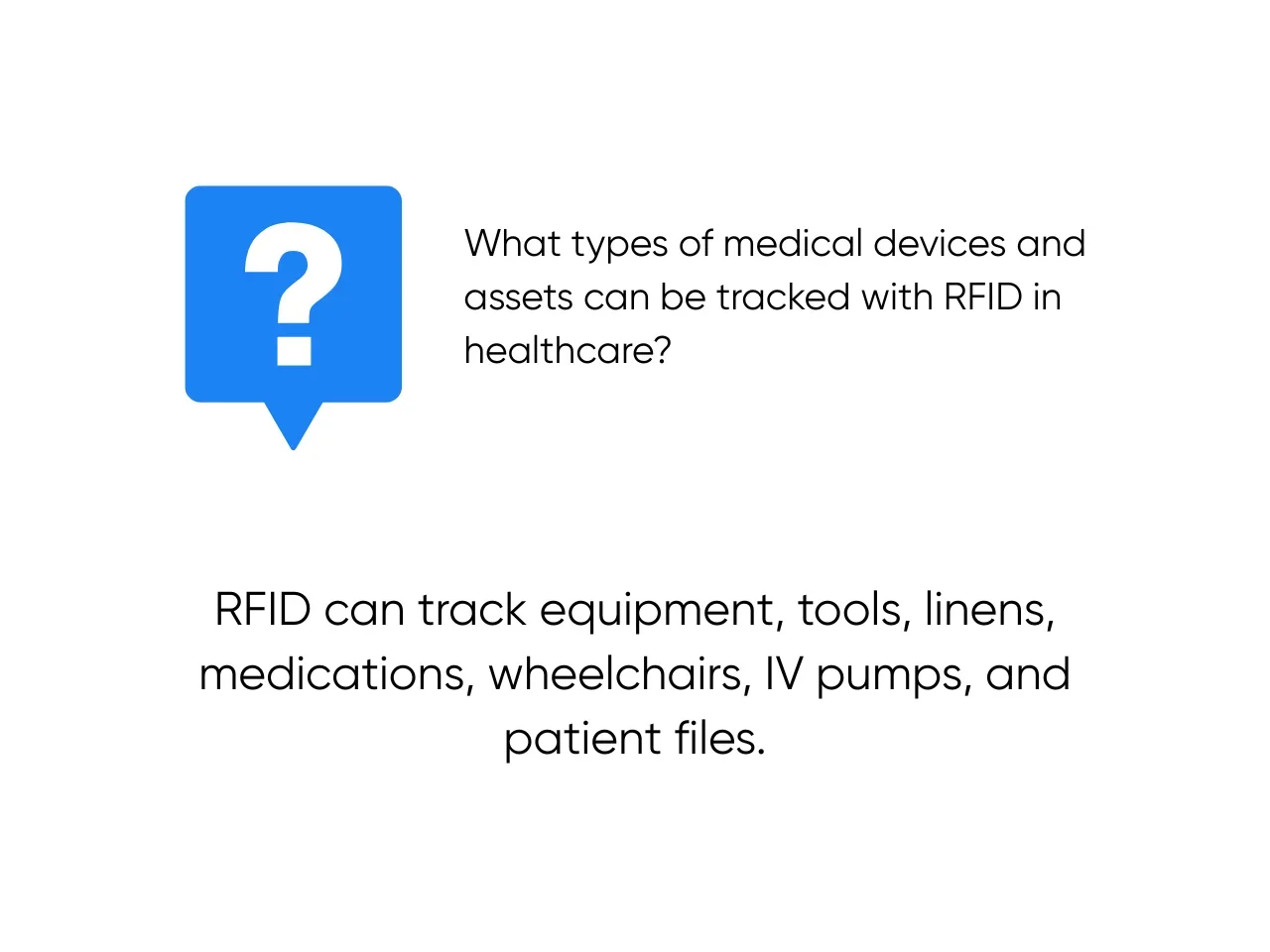
RFID can track medical equipment, surgical tools, linens, and medication. It also covers wheelchairs, IV pumps, and even patient files. This improves asset visibility and reduces loss or theft. RFID supports efficient inventory and faster audits.
2. How does RFID help healthcare organizations comply with regulations such as FDA UDI?
RFID makes compliance with FDA UDI requirements easier. It automates device identification and tracking for accurate reporting. This reduces manual errors and supports faster recalls. RFID helps maintain proper device records and audit trails.
3. Can RFID tags withstand sterilization processes like autoclaving or chemical cleaning?
Yes, many RFID tags are built for harsh sterilization processes. These tags resist high heat, pressure, and chemicals. They keep working after autoclaving or chemical cleaning cycles. This makes them ideal for reusable surgical instruments.
4. Are there any risks of RFID systems interfering with medical equipment operation?
Minimal risk exists when RFID is installed correctly. Most RFID systems use safe frequencies for hospitals. Site assessments help prevent interference with sensitive devices. Expert configuration ensures continued safe operation of all equipment.
5. What are the main benefits of switching from barcode to RFID for medical device tracking?
RFID does not need line-of-sight for scanning. It scans multiple items at once, saving time. RFID tags are more durable than barcodes. This leads to fewer errors, less manual work, and better asset management.
6. How can RFID data be integrated with existing hospital management and EHR systems?
RFID data connects through APIs or custom middleware solutions. This integration automates updates to asset and patient records. It reduces manual data entry and errors. Aloa can build custom integrations for your hospital systems.

